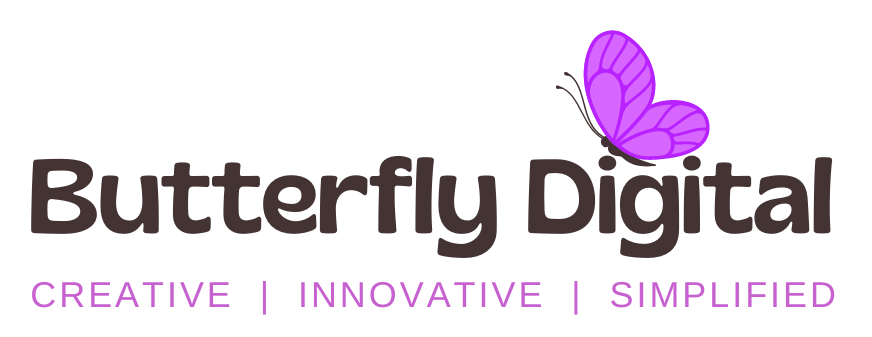The Future of Work: How Remote Outsourcing is Shaping the Next Generation of Business Models
Remote outsourcing has become a cornerstone of modern business, transforming the way organizations operate and paving the way for innovative, tech-enabled models. As companies increasingly adopt remote outsourcing to meet workforce demands, they are moving toward more flexible, scalable, and efficient systems. This shift is not only redefining business operations but also reshaping the global workforce.
Butterfly Digital helps businesses embrace the future of work by providing tailored remote outsourcing solutions that align with emerging trends and market demands. This article explores how remote outsourcing is shaping next-generation business models and what it means for the future of work.
The Rise of Remote Outsourcing
The rise of remote outsourcing can be attributed to several factors:
- Technological Advancements: Cloud computing, AI, and collaboration tools enable seamless remote work.
- Workforce Globalization: Companies can access skilled professionals from diverse geographies.
- Demand for Flexibility: Businesses and workers alike are prioritizing adaptable work arrangements.
- Cost Optimization: Remote outsourcing reduces overhead costs while maintaining high productivity.
These drivers are pushing companies to rethink traditional models and adopt more agile approaches.
How Remote Outsourcing is Transforming Business Models
1. Flexibility and Scalability
Remote outsourcing allows companies to scale operations up or down based on demand. Key benefits include:
- Project-Based Teams: Businesses can assemble specialized teams for short-term projects without long-term commitments.
- Global Workforce Access: Companies can source talent from different regions to meet varying needs.
- Agile Responses to Market Changes: Remote outsourcing enables faster adaptation to new opportunities and challenges.
2. Tech-Enabled Operations
Technology is central to the success of remote outsourcing, with tools like:
- Cloud Platforms: Enable secure access to shared resources and data.
- AI and Automation: Streamline processes such as talent sourcing and project management.
- Collaboration Tools: Platforms like Slack, Zoom, and Microsoft Teams facilitate real-time communication and coordination.
Butterfly Digital integrates cutting-edge technologies into its remote outsourcing solutions, ensuring efficiency and reliability.
3. Cost-Efficient Structures
Traditional business models often require significant investment in physical infrastructure. Remote outsourcing reduces costs by:
- Eliminating expenses for office spaces, utilities, and equipment.
- Offering access to talent in regions with lower labor costs.
- Minimizing overhead associated with in-house teams.
4. Focus on Core Competencies
Outsourcing non-core functions such as IT support, customer service, and marketing allows companies to:
- Concentrate on strategic initiatives and growth opportunities.
- Enhance operational efficiency by delegating specialized tasks to experts.
- Improve product and service quality through focused efforts.
Emerging Trends in Remote Outsourcing
1. Hybrid Work Models
As remote work becomes the norm, many companies are adopting hybrid models that combine remote outsourcing with in-house teams. This approach offers:
- Collaboration Flexibility: Remote and on-site teams can work together seamlessly.
- Reduced Operational Costs: Businesses maintain smaller physical offices while leveraging remote resources.
- Improved Employee Satisfaction: Workers can choose arrangements that suit their preferences.
2. AI-Driven Outsourcing
Artificial intelligence is revolutionizing remote outsourcing by:
- Optimizing Talent Matching: AI tools match candidates to roles based on skills, experience, and project requirements.
- Enhancing Productivity: Automation handles routine tasks, allowing teams to focus on high-value activities.
- Providing Real-Time Insights: AI-powered analytics offer actionable data to improve performance and efficiency.
3. Remote-First Business Models
Companies are increasingly adopting remote-first strategies, which prioritize remote operations as the default. Benefits include:
- Global Talent Integration: Remote-first models make it easier to integrate international teams.
- Sustainability: Reduced commuting and office usage contribute to environmental goals.
- Innovation: Distributed teams bring diverse perspectives that drive creativity.
The Benefits of Remote Outsourcing for Businesses
1. Enhanced Talent Access
Remote outsourcing allows businesses to tap into a global talent pool, ensuring access to top professionals regardless of location.
2. Increased Agility
Outsourced teams can quickly adapt to changing demands, enabling businesses to pivot and innovate more effectively.
3. Competitive Advantage
By leveraging the latest technologies and diverse expertise, companies can outpace competitors in innovation and execution.
4. Resilience and Continuity
Remote outsourcing provides a buffer against disruptions like natural disasters, pandemics, or geopolitical issues, ensuring continuity of operations.
Challenges of Remote Outsourcing and How to Overcome Them
- Communication Barriers: Use tools like Slack and Microsoft Teams to facilitate clear and consistent communication.
- Data Security Risks: Implement end-to-end encryption, multi-factor authentication, and secure cloud storage.
- Time Zone Differences: Establish overlapping work hours or use asynchronous communication to maintain productivity.
Butterfly Digital addresses these challenges by offering comprehensive support and secure remote outsourcing solutions tailored to each client’s needs.
The Future of Remote Outsourcing
The future of work will continue to be shaped by remote outsourcing, with key trends including:
- AI-Integrated Workflows: Greater reliance on AI to optimize workflows, reduce costs, and enhance decision-making.
- Focus on Employee Well-Being: Remote outsourcing partners will prioritize mental health support and work-life balance for teams.
- Sustainability Goals: Companies will align remote outsourcing strategies with environmental and social responsibility objectives.
Butterfly Digital is committed to staying at the forefront of these changes, helping clients navigate the evolving business landscape with innovative outsourcing solutions.
Conclusion
Remote outsourcing is revolutionizing traditional business models, enabling companies to operate more flexibly, efficiently, and competitively. By embracing technology, prioritizing scalability, and focusing on core strengths, businesses can thrive in a remote-first world.
Butterfly Digital provides end-to-end remote outsourcing solutions that empower businesses to adapt, innovate, and succeed in the future of work. Together, we can shape the next generation of business models.




